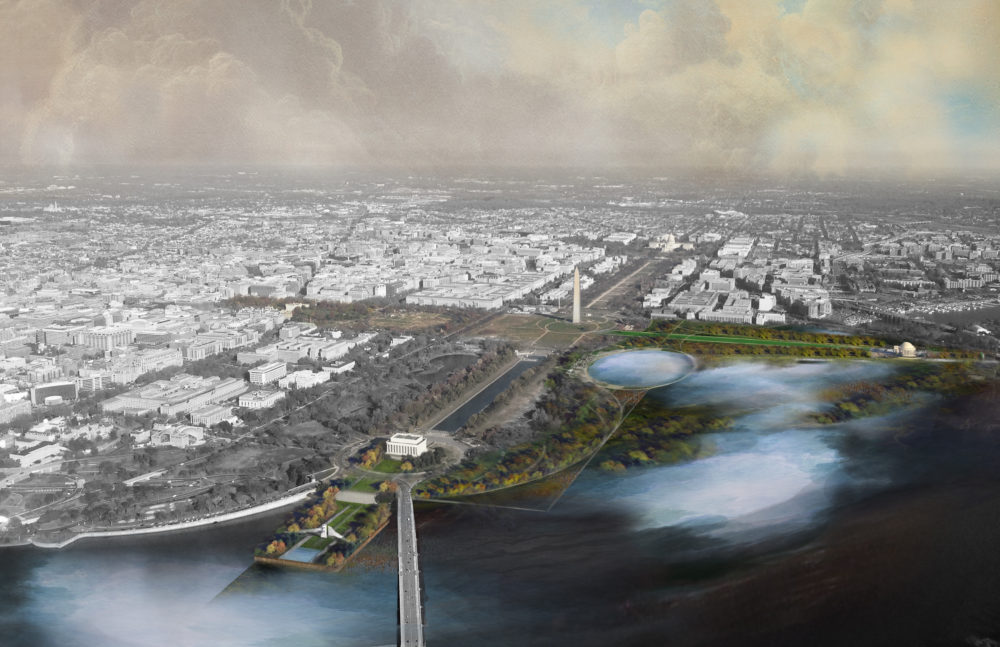
Tidal Basin Ideas Lab: History Secured
National Mall, Washington, D.C.
 Sasaki
Sasaki
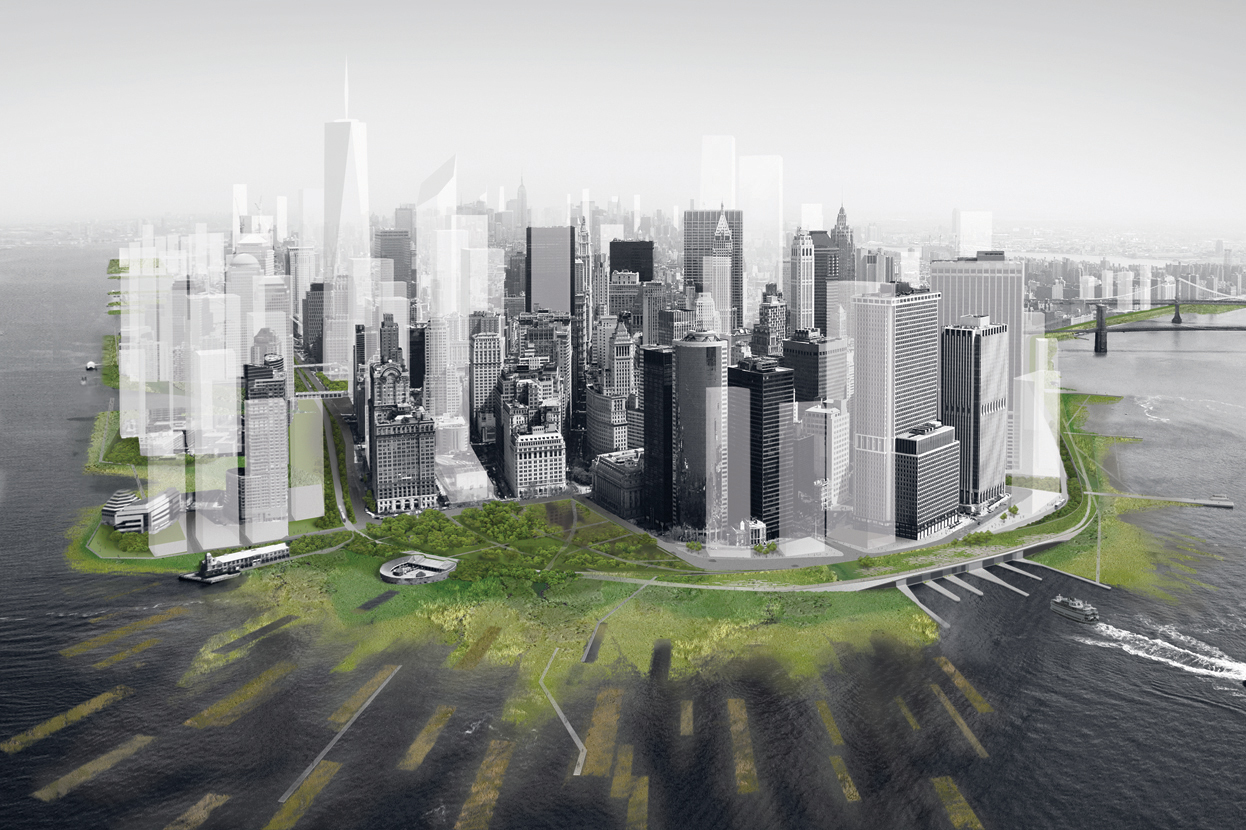
A New Urban Ground is a quietly radical rethinking of urban design that brings together natural ecologies with engineered infrastructure systems to transform the city in both performance and experience. This plan, which was proposed almost two years before Hurricane Sandy flooded Lower Manhattan, has been cited internationally as a possible model for new civic approaches to storm and sea level rise resilience.
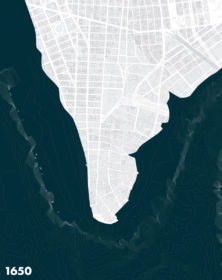
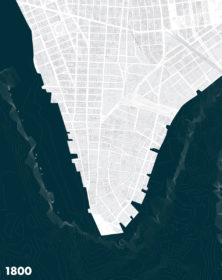
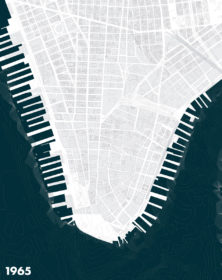
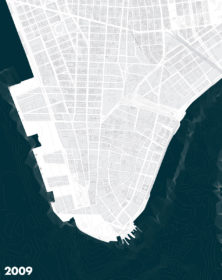
DLANDstudio partnered with ARO to create “A New Urban Ground” for the Museum of Modern Art’s 2010 Rising Currents exhibition, calling attention to Manhattan’s vulnerability to climate change impacts. Currently, an oppositional relationship exists between the built city and water. “A New Urban Ground” proposes an integrated and reciprocal organization of natural and hard infrastructure systems. A combination of strategies, including perimeter wetlands, a raised edge, and sponge slips, paired with new upland street-infrastructure systems, protect the island from flooding in the event of a large storm.
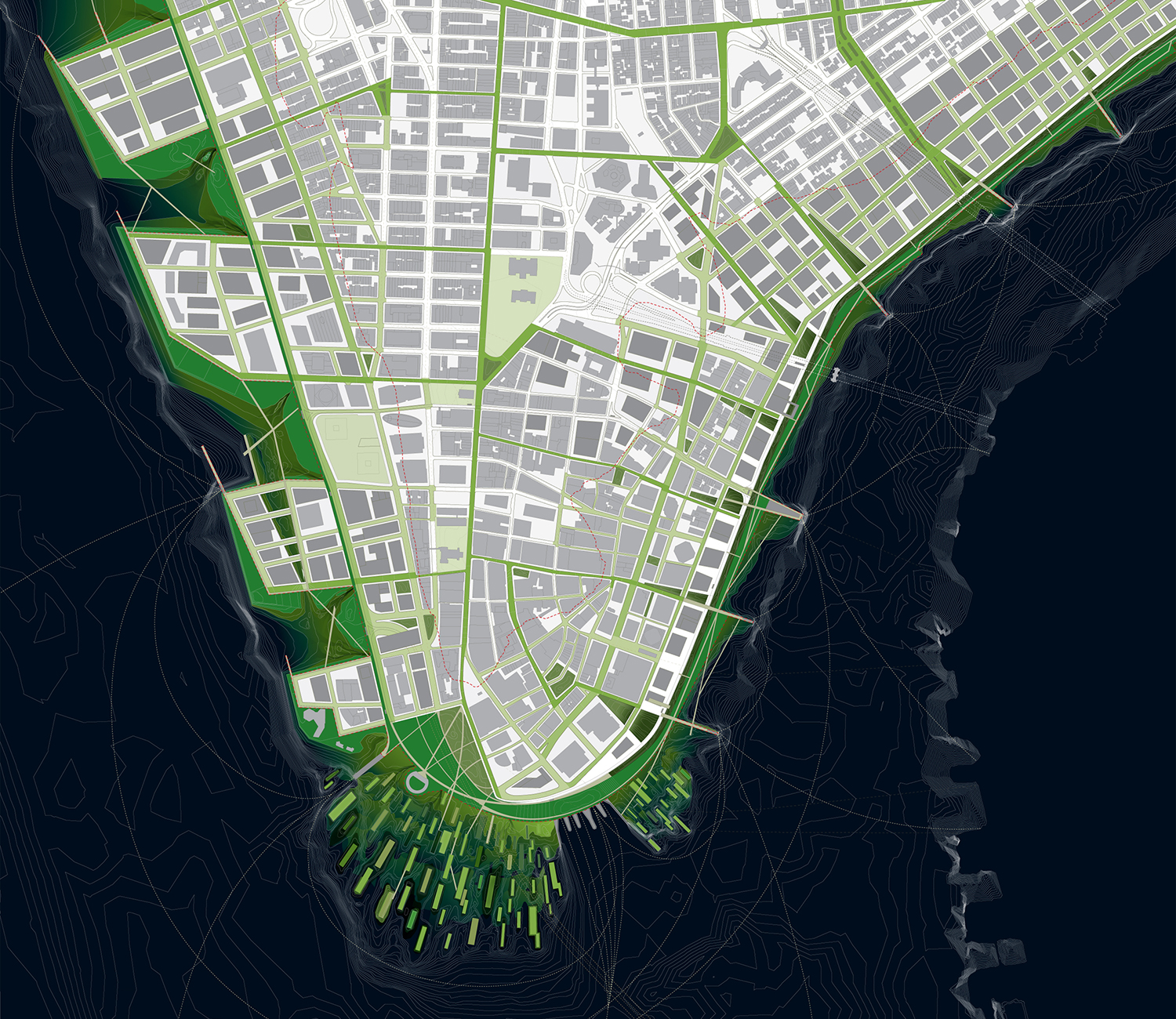
The proposal consists of two components that form an interconnected system: porous green streets and a graduated edge. Porous streets will absorb typical rain events and help keep surface water out of the city’s combined sewer system. In larger storms, the streets filter and carry water to new perimeter wetlands to enrich coastal ecologies.
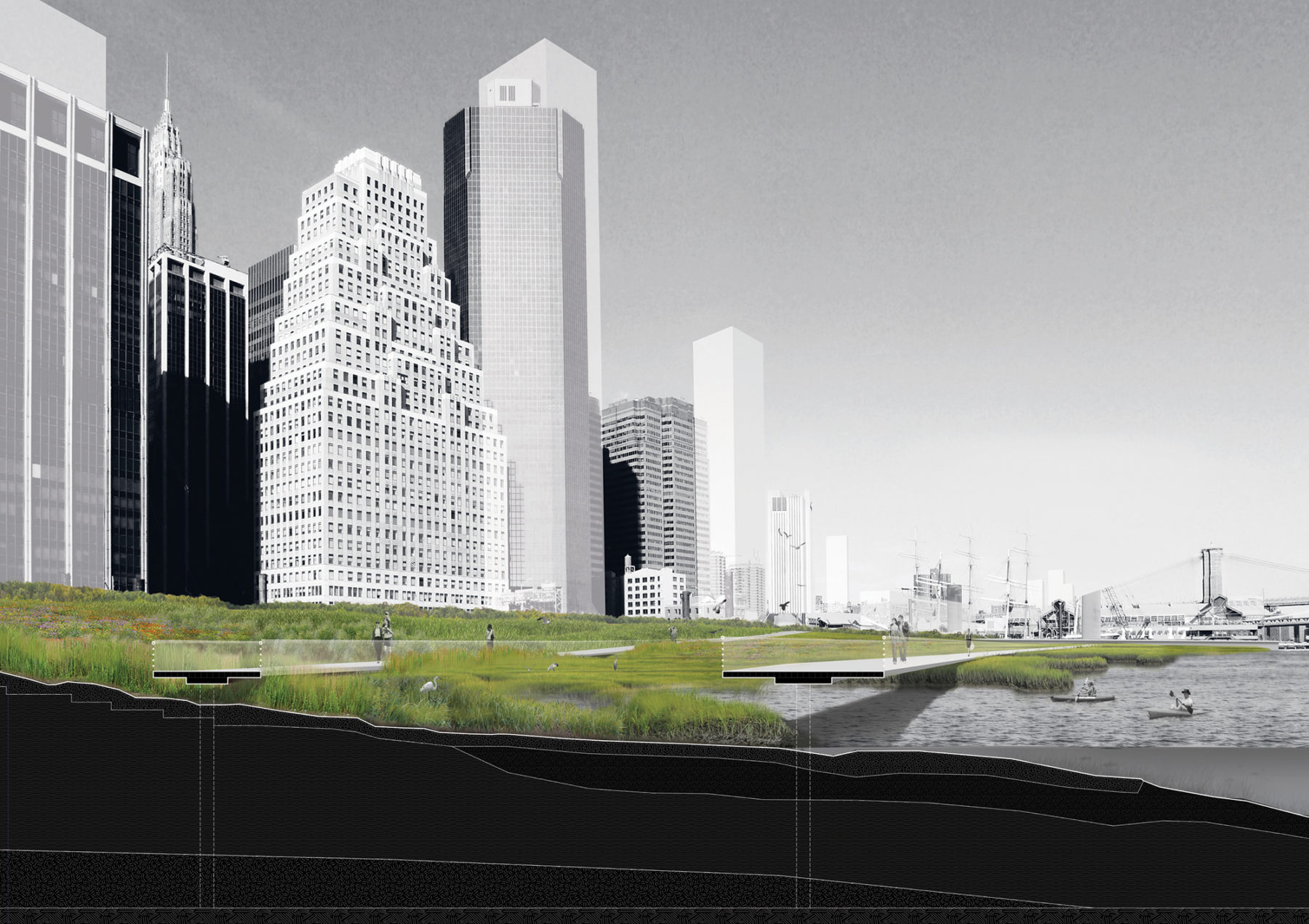
Perimeter wetlands in the East River
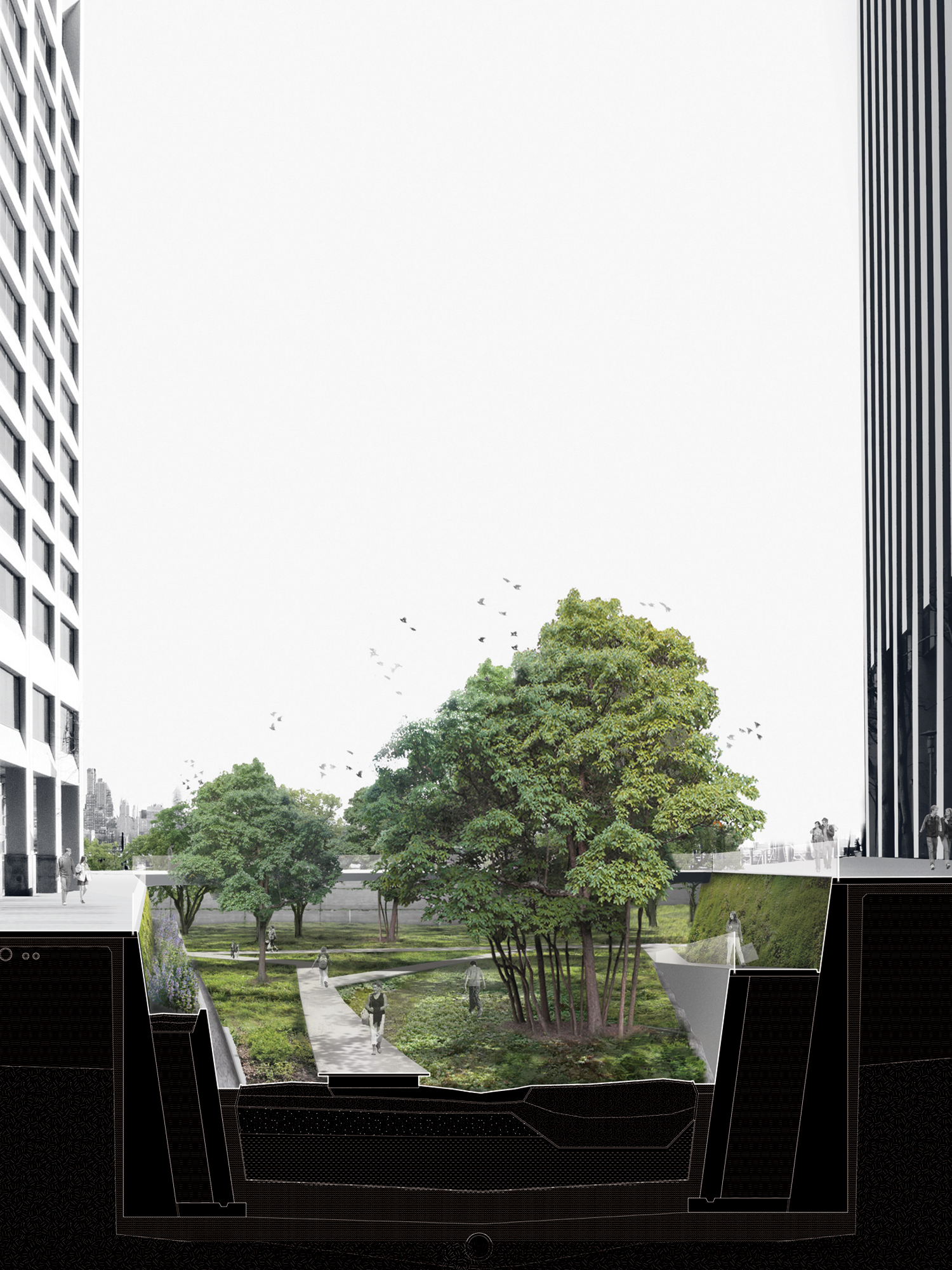
Sponge slips
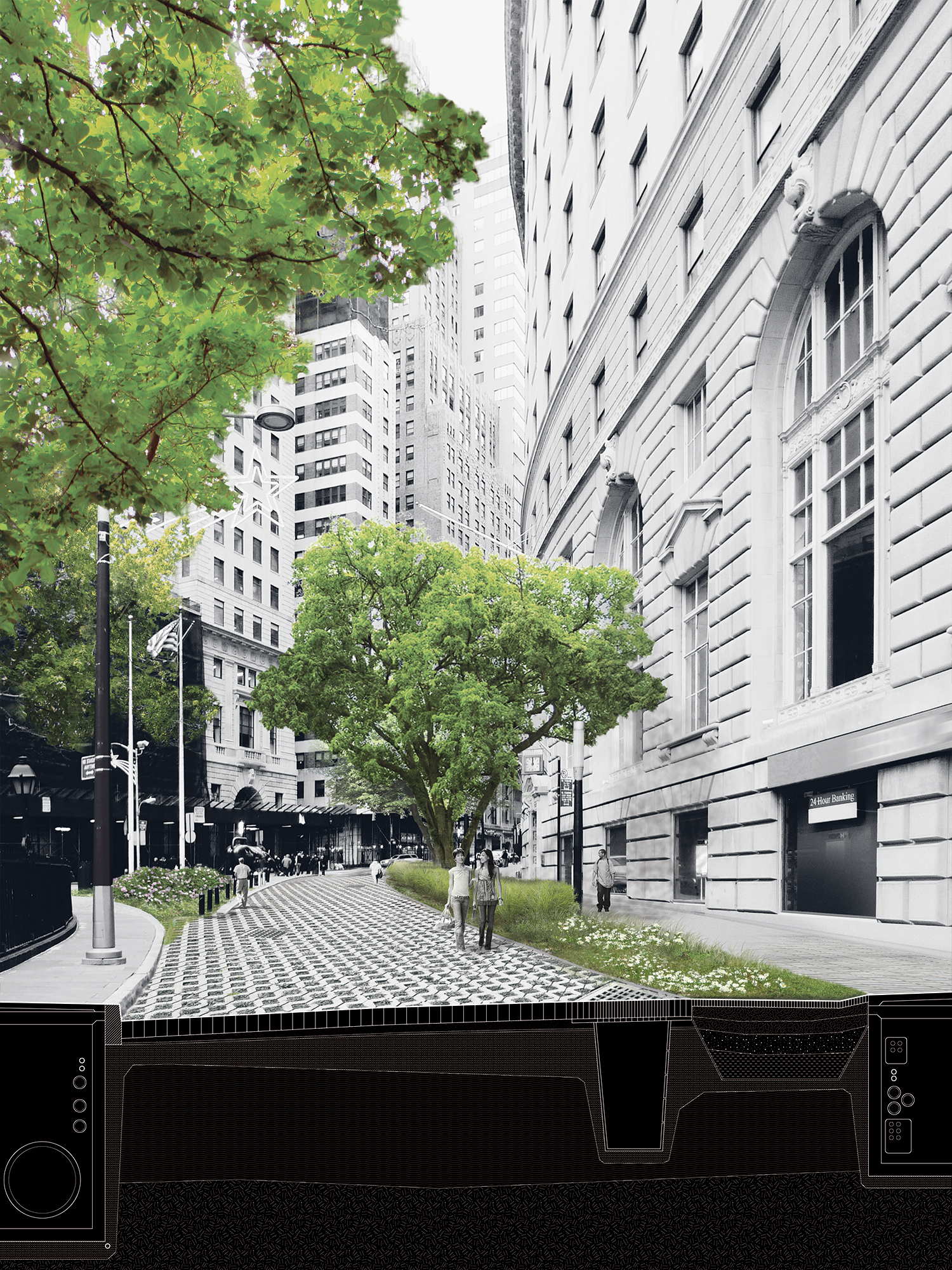
Porous streets
Three interrelated, high-performance systems are constructed on the coast to mitigate sea level rise and storm surge force: an upland park network, freshwater wetlands, and brackish marshes.
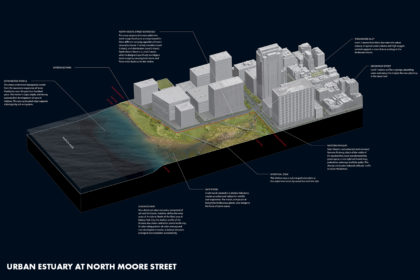
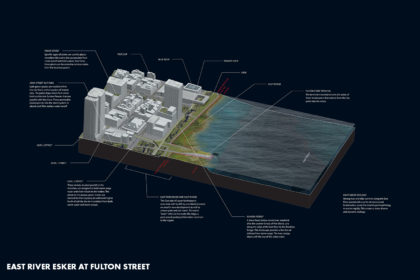
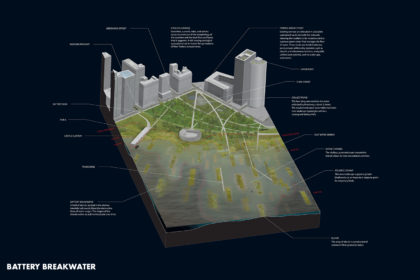
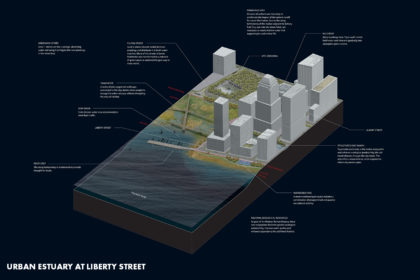
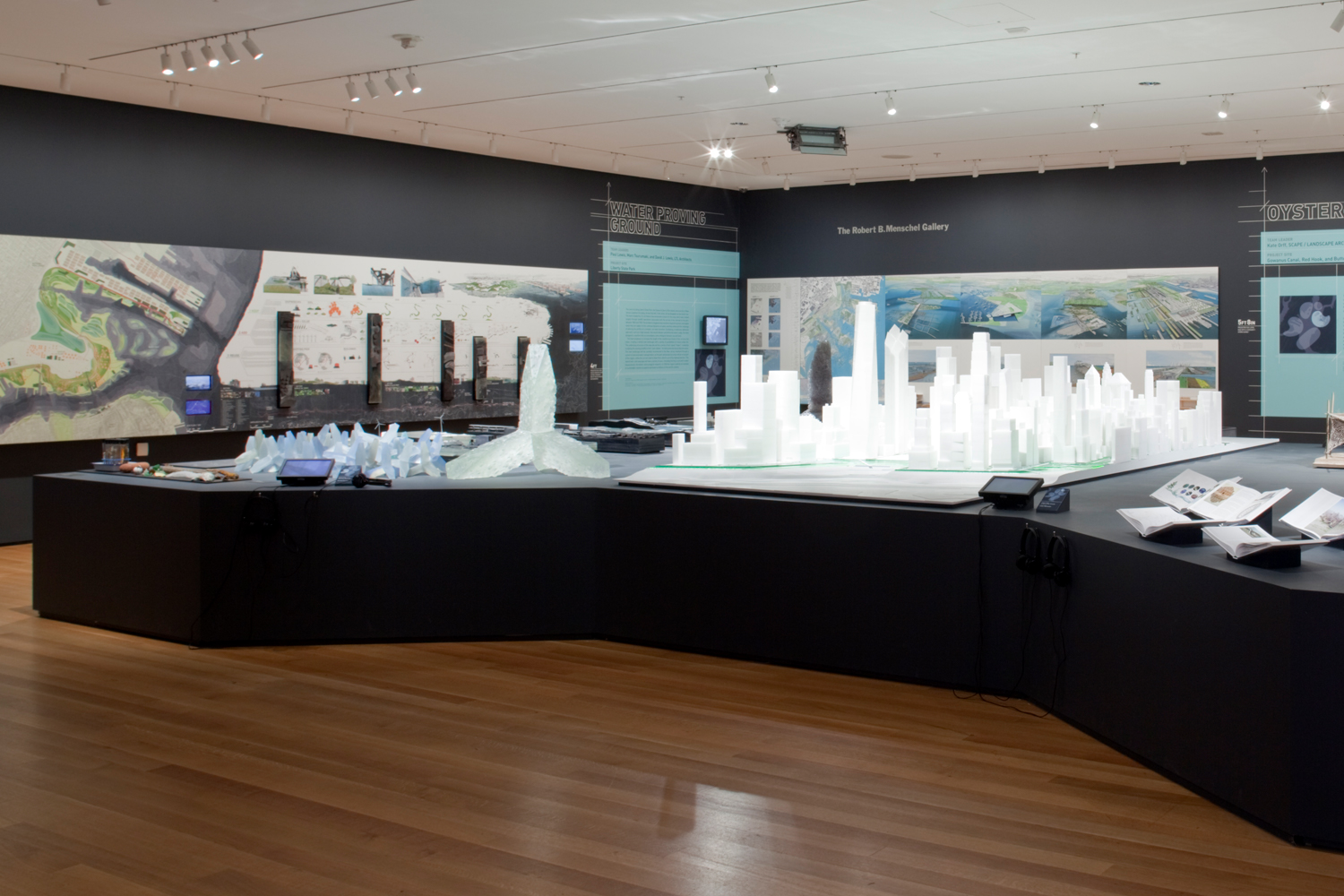
©2010 The Museum of Modern Art, New York. Photo: Thomas Griesel
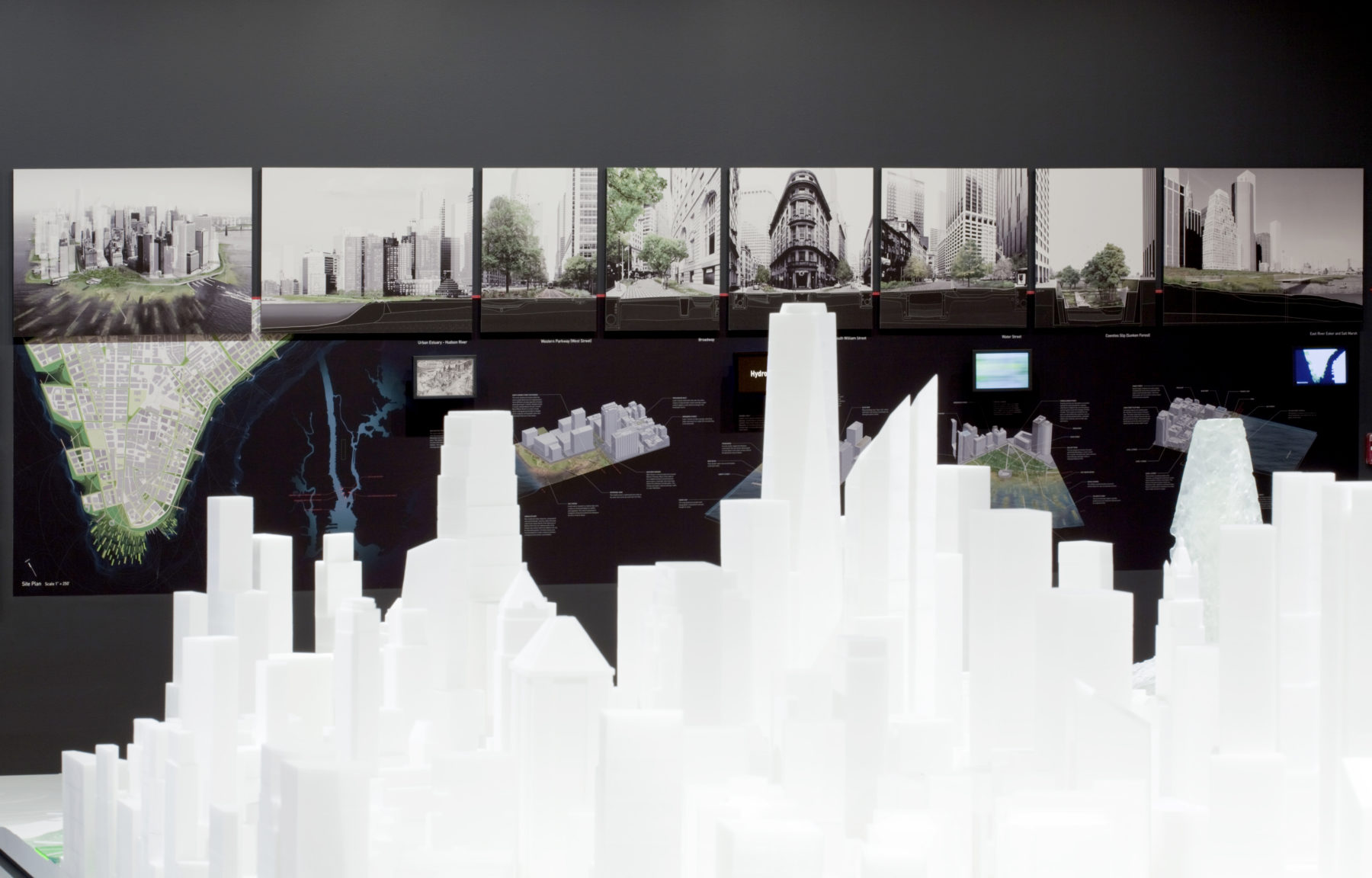
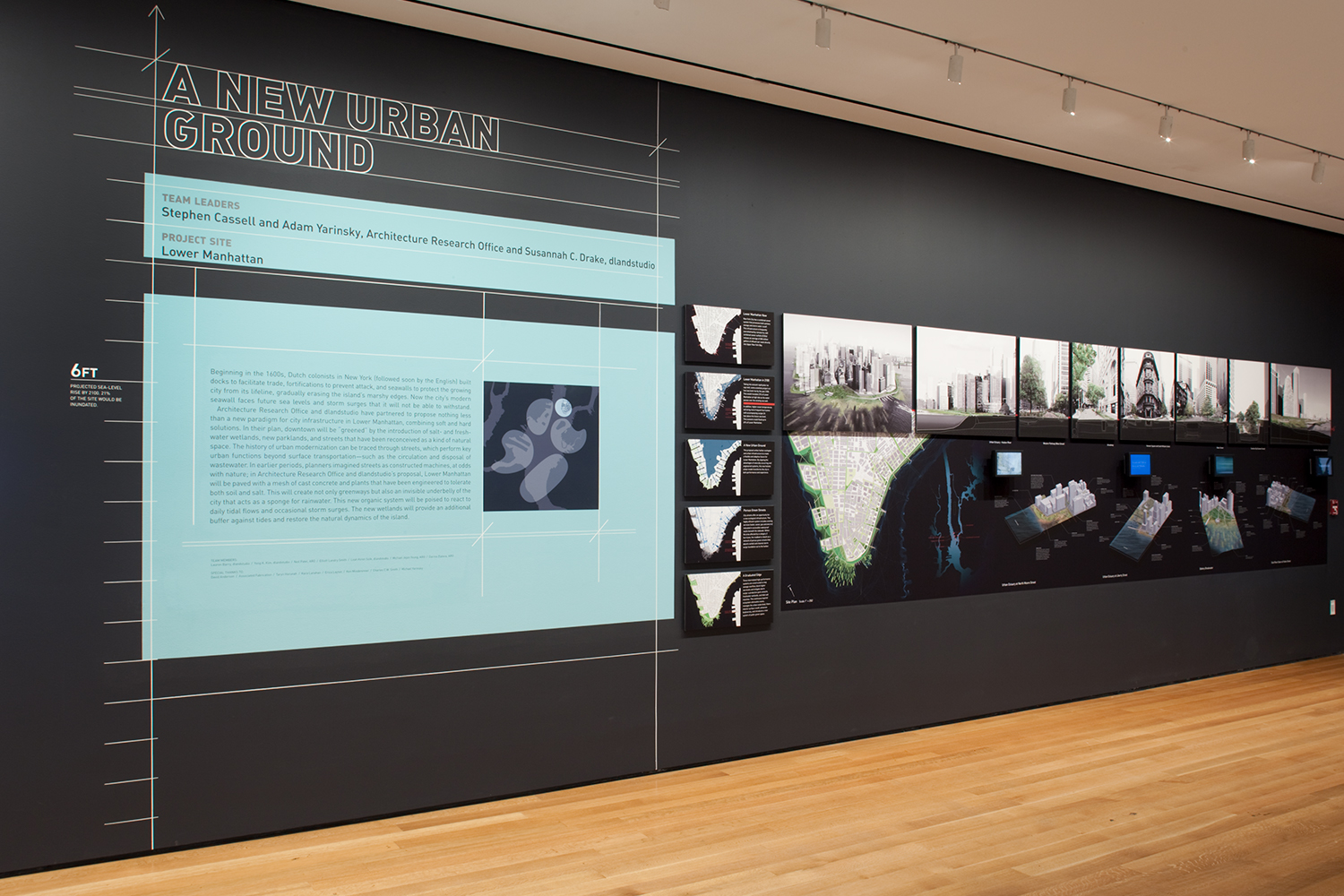
©2010 The Museum of Modern Art, New York. Photo: Thomas Griesel
For more information contact Susannah Drake.